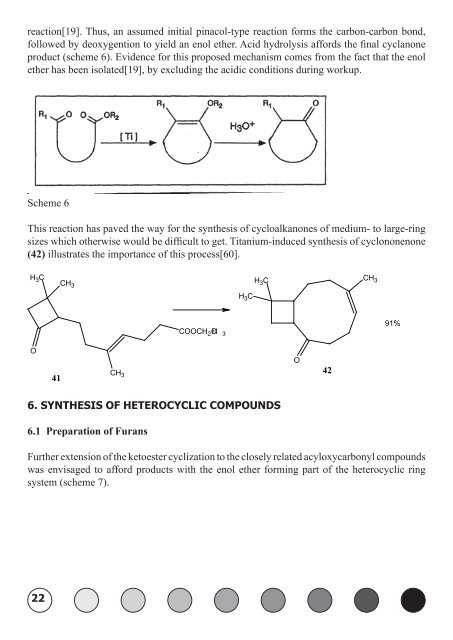Low-Valent Titanium Induced Carbonyl Coupling Reactions
Low-Valent Titanium Induced Carbonyl Coupling Reactions
Low-Valent Titanium Induced Carbonyl Coupling Reactions
You also want an ePaper? Increase the reach of your titles
YUMPU automatically turns print PDFs into web optimized ePapers that Google loves.
eaction[19]. Thus, an assumed initial pinacol-type reaction forms the carbon-carbon bond,<br />
followed by deoxygention to yield an enol ether. Acid hydrolysis affords the final cyclanone<br />
product (scheme 6). Evidence for this proposed mechanism comes from the fact that the enol<br />
ether has been isolated[19], by excluding the acidic conditions during workup.<br />
Scheme 6<br />
This reaction has paved the way for the synthesis of cycloalkanones of medium- to large-ring<br />
sizes which otherwise would be difficult to get. <strong>Titanium</strong>-induced synthesis of cyclononenone<br />
(42) illustrates the importance of this process[60].<br />
C<br />
H 3<br />
O<br />
22<br />
41<br />
CH 3<br />
CH 3<br />
COOCH 2CH 3<br />
C<br />
H 3<br />
C<br />
H 3<br />
6. SyNThESIS OF hETEROCyCLIC COMPOUNdS<br />
6.1 Preparation of Furans<br />
Further extension of the ketoester cyclization to the closely related acyloxycarbonyl compounds<br />
was envisaged to afford products with the enol ether forming part of the heterocyclic ring<br />
system (scheme 7).<br />
O<br />
42<br />
CH 3<br />
91%










